This page contains affiliate links. Please read our disclosure for more info.
We were in need of stillness. Of quiet, focus, routine.
We found it at Lake Atitlán in Guatemala. Our apartment, near the small village of San Marcos, is built into the mountainside and surrounded by fruit trees and colourful flowers—coffee, banana, papaya, lime, jocote, bougainvillea, angel’s trumpets, and many more I can’t identify.
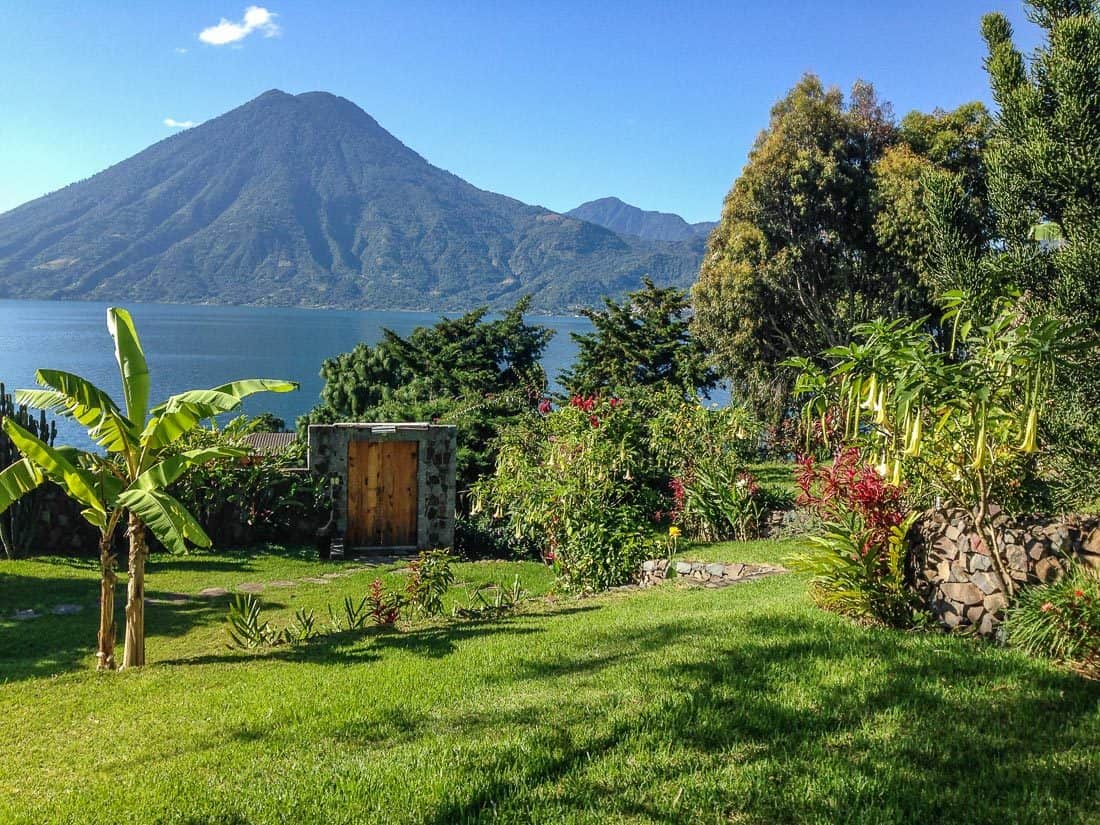
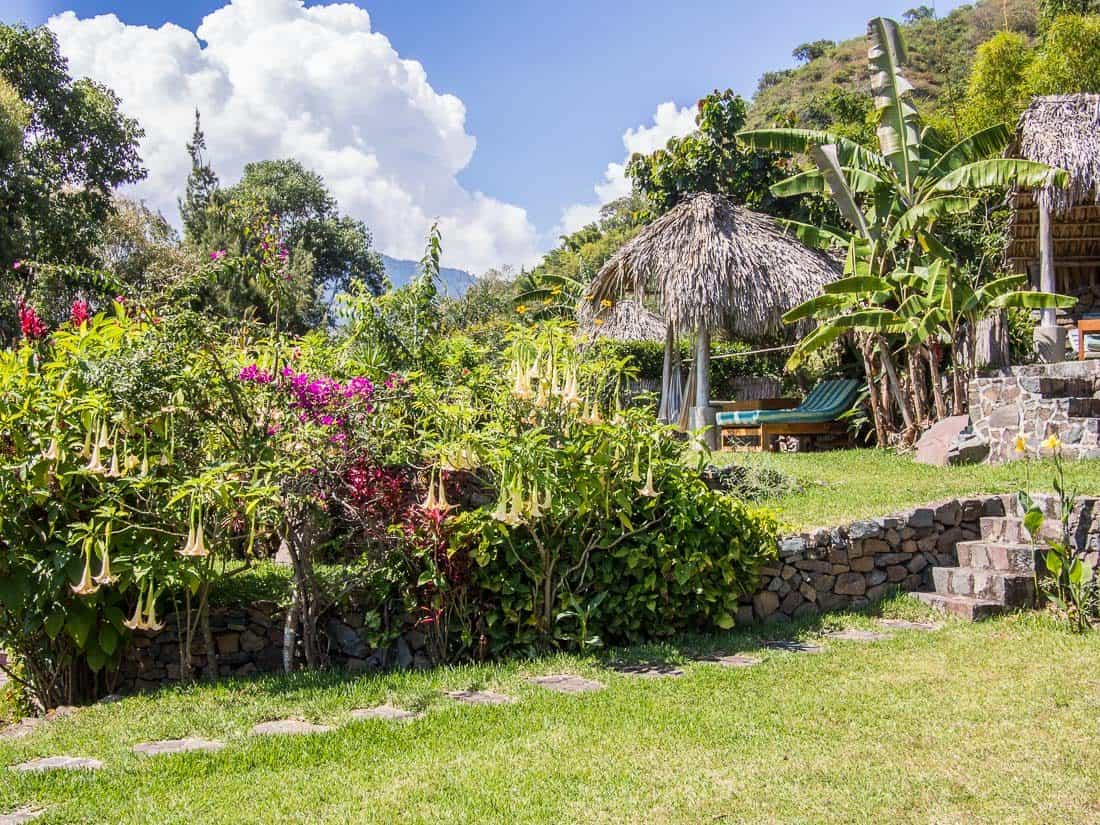
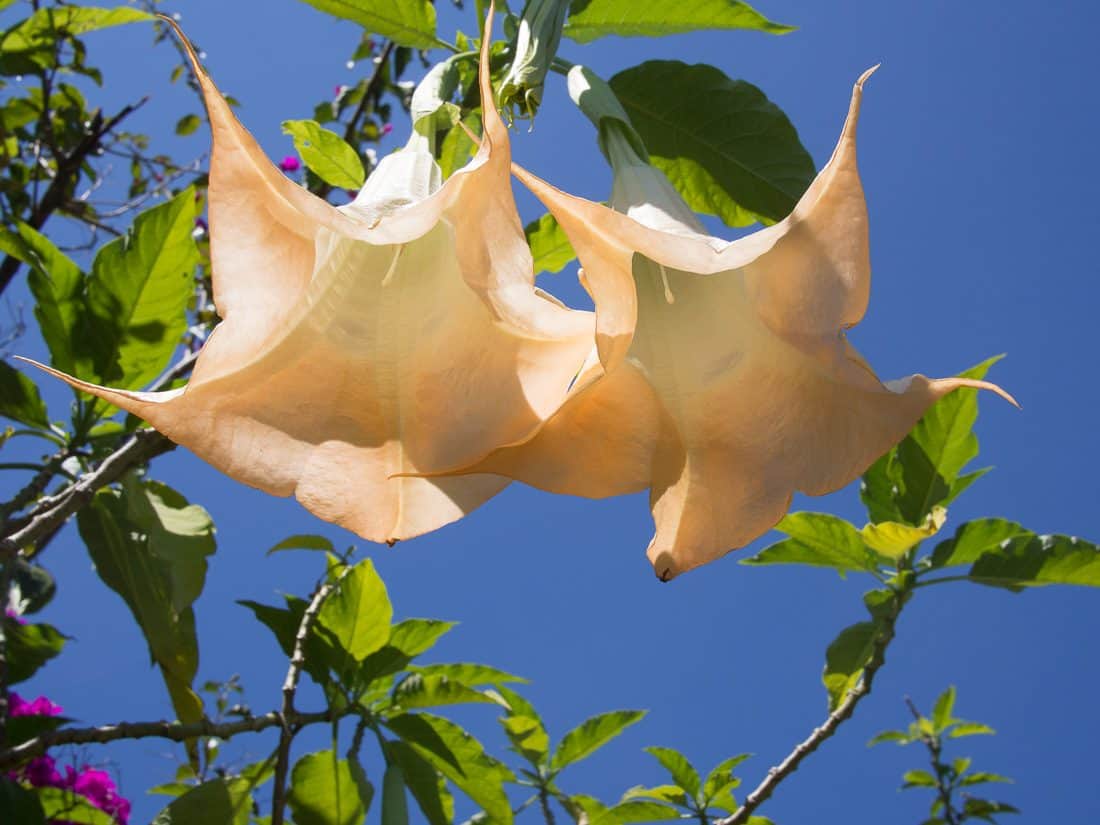
Every morning we wake up with the sun and roosters to the expansive lake and its three volcanoes Atitlán, Toliman, and San Pedro.
Our apartment is designed to maximise the view with large windows that slide open to let the outside in: the breeze and birdsong along with scorpions and giant bees. The volcanoes and lake are ever present—when we’re lying in bed, cooking in the kitchen, even when taking a shower. We watch its changing colours and moods.
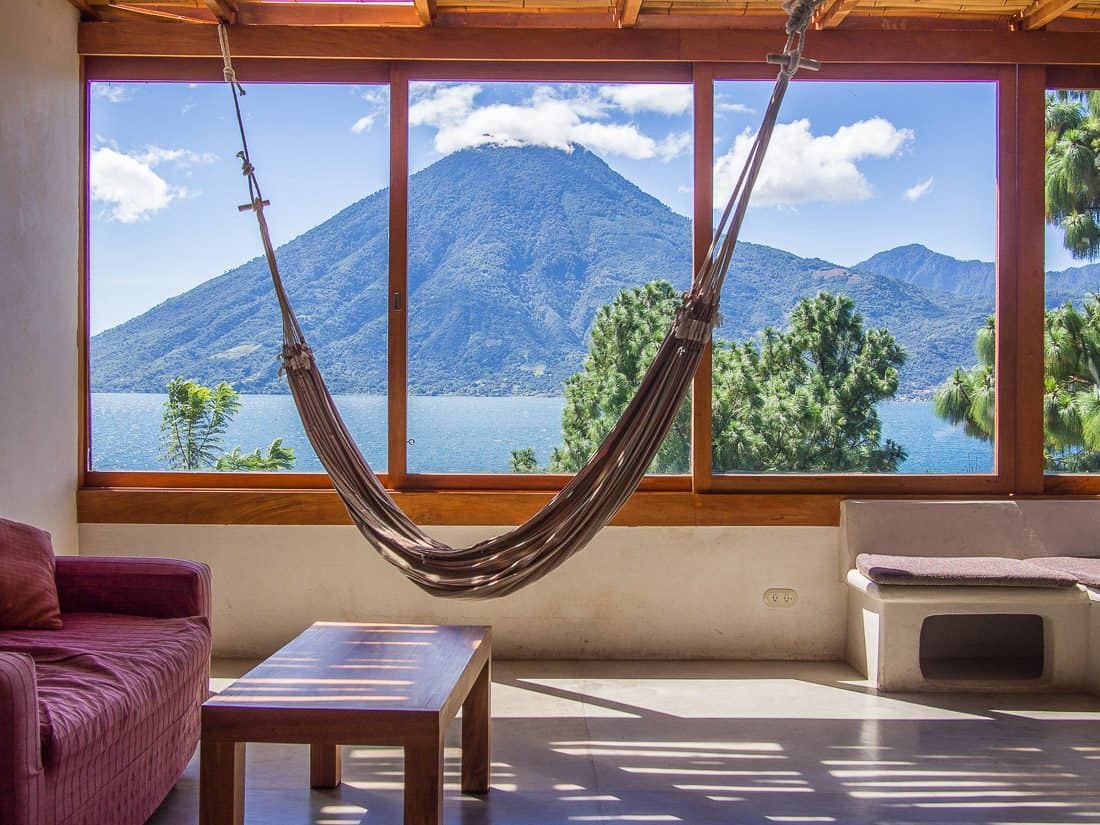
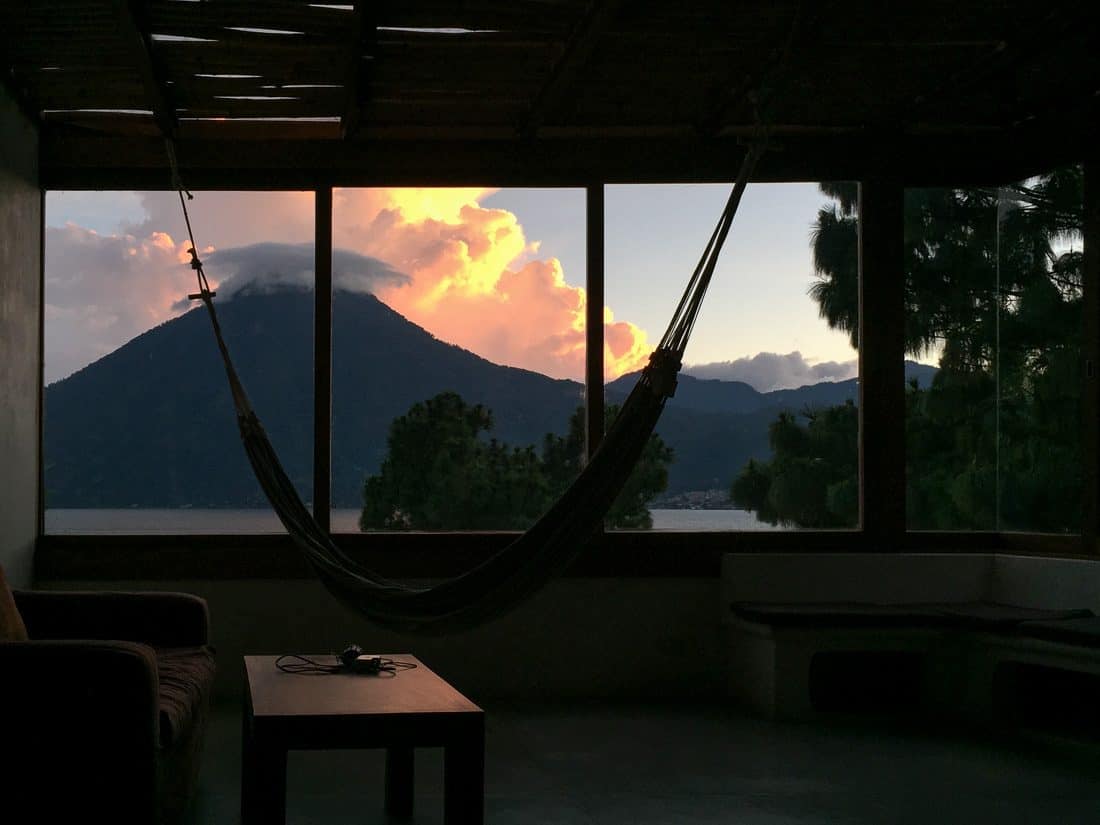
A steep walk down the hill brings us to the lake. From the rickety private dock we can jump into the cool water, or flag down a passing lancha to take us to one of the villages.
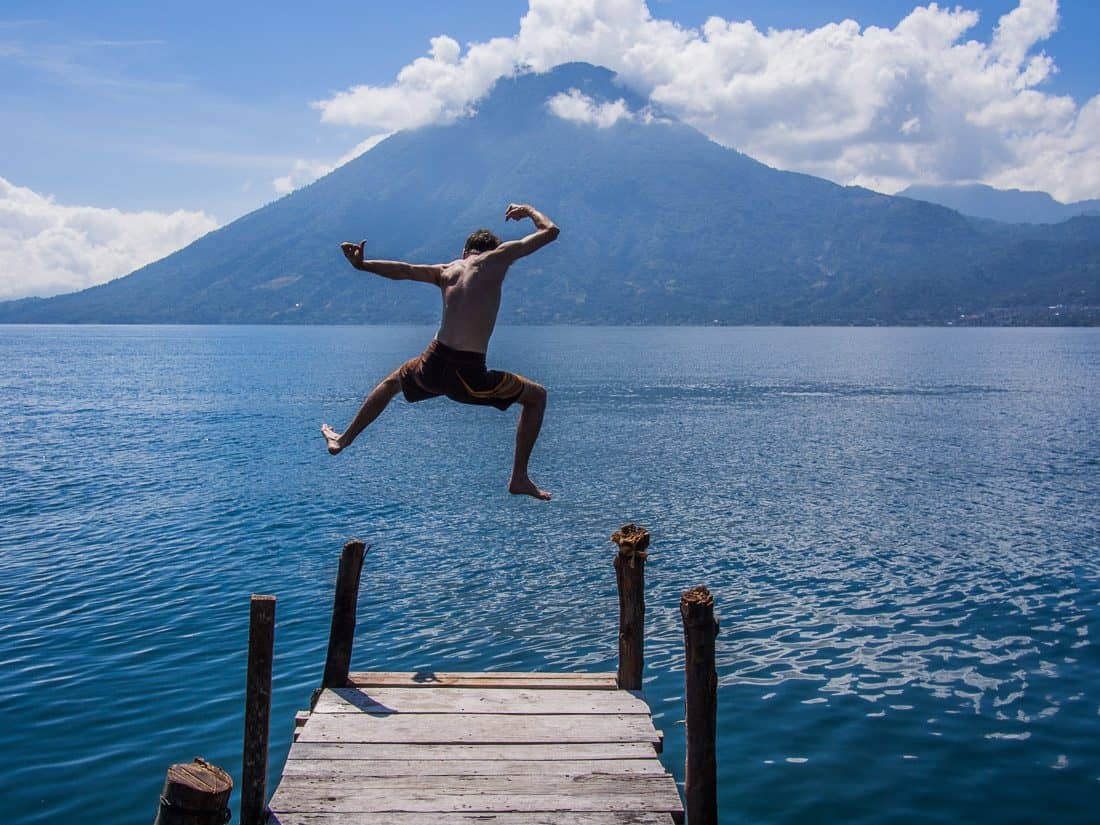
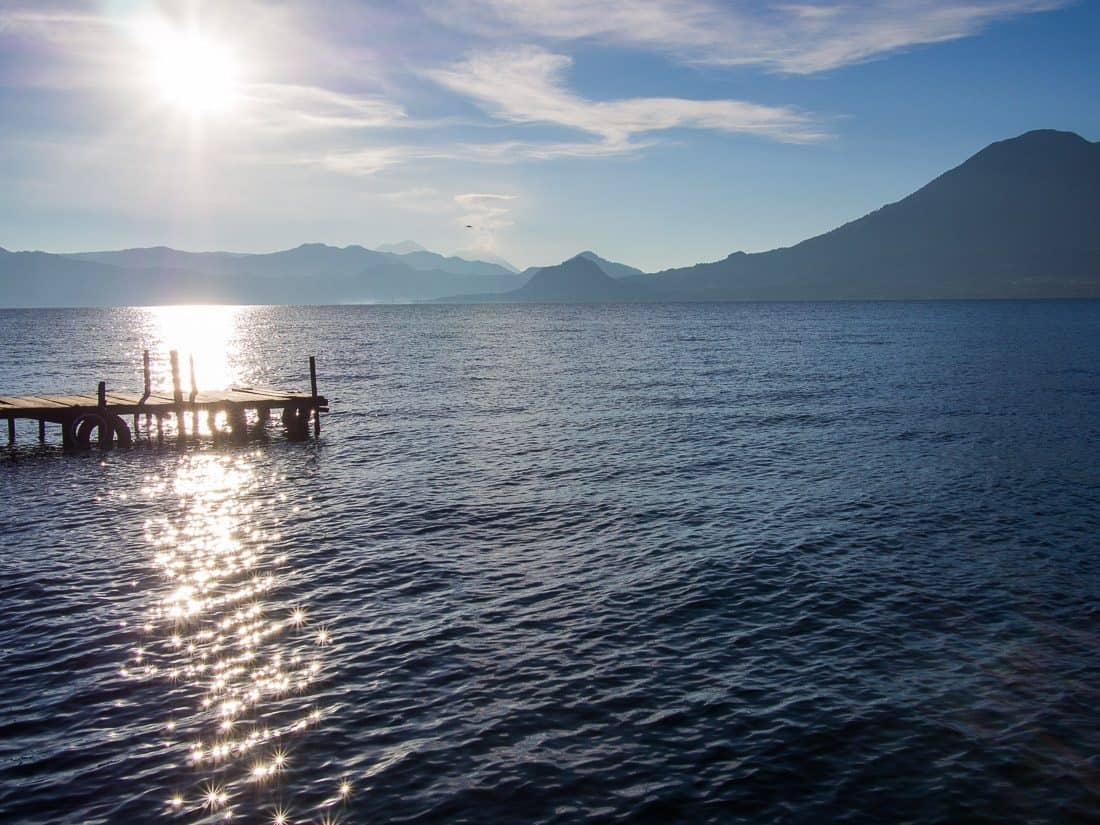
It’s quiet here. There are no distractions, not even a shop close by. We’ve hardly gone anywhere—we haven’t hiked a volcano, gone kayaking, or toured the villages. Sometimes the urge to explore fades and we’re content to revel in routine. Simon rarely leaves the apartment, he’s so immersed in his projects. I run, go to yoga classes, write, swim, and experiment with vegan baking.
My morning runs are challenging. I stumble on the rocky trails, gasp for breath up the many hills, my lungs burning at the 1585m altitude. But it’s one of the most beautiful places I’ve run, and I don’t need music or podcasts to entertain me.
I run through Tzununa, a traditional Mayan village. Pigs, fluffy chicks, plump ducks, and scraggly dogs wander the cobbled streets. I pass women in vibrant embroidered blouses carrying baskets of corn to be ground into masa dough, or back with the masa, ready to be made into tortillas, the staple of Guatemalan cuisine. The teenage boys wear jeans and t-shirts, the men broad cowboy hats and machetes. The kids call out “hola” or, the more confident ones, “hello”; the elders a polite “buenos días”. I must look strange to them—there aren’t many runners around here—but they withhold comment.
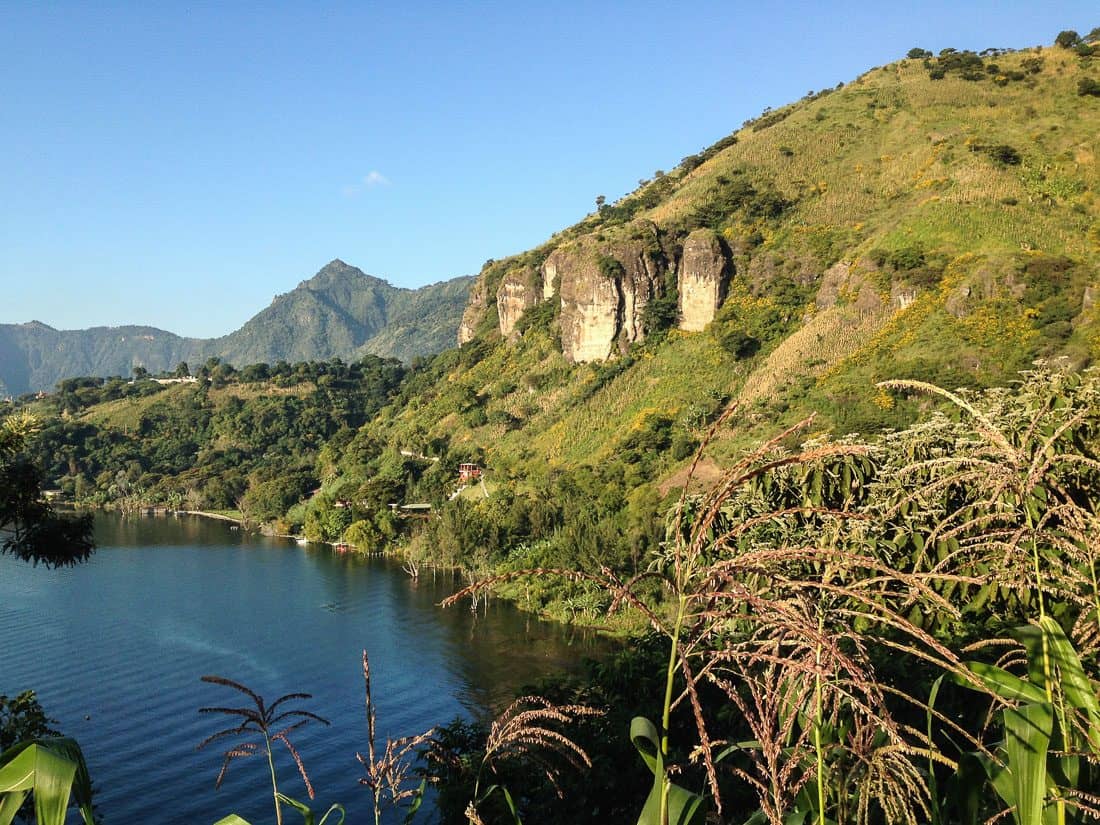
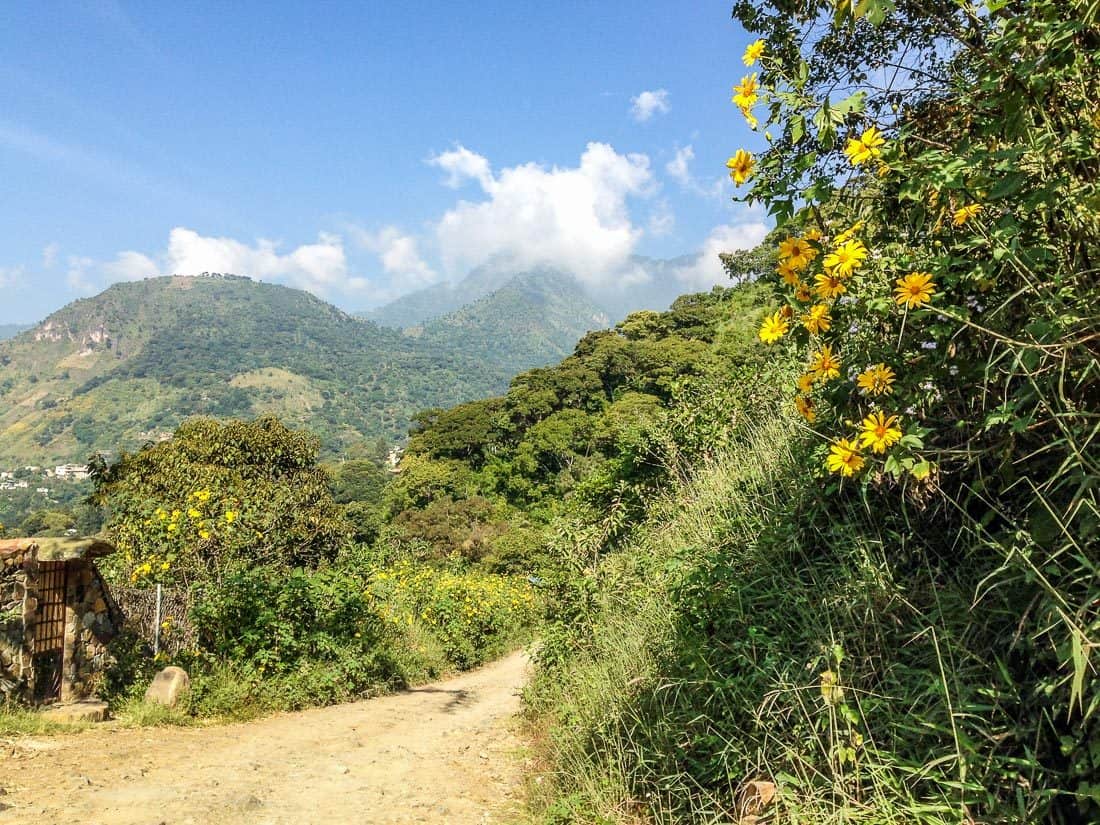
Our nearest village is San Marcos La Laguna, a 15 minute walk away along a rough dirt track, the lake on one side, the forest covered mountains brightened with yellow flowers and red coffee beans on the other. There’s no street lighting and traffic is rare, just the occasional three wheeled tuktuk or pick up truck crammed with passengers.
The village’s main plaza consists of three small tiendas, an even smaller health food shop, a simple restaurant I’ve never seen anyone in, a desolate children’s playground, occasional tamales stalls, and a few women sat on the floor selling fruit and vegetables. Next door is a basketball court where we were pleased to see a girl’s team playing.
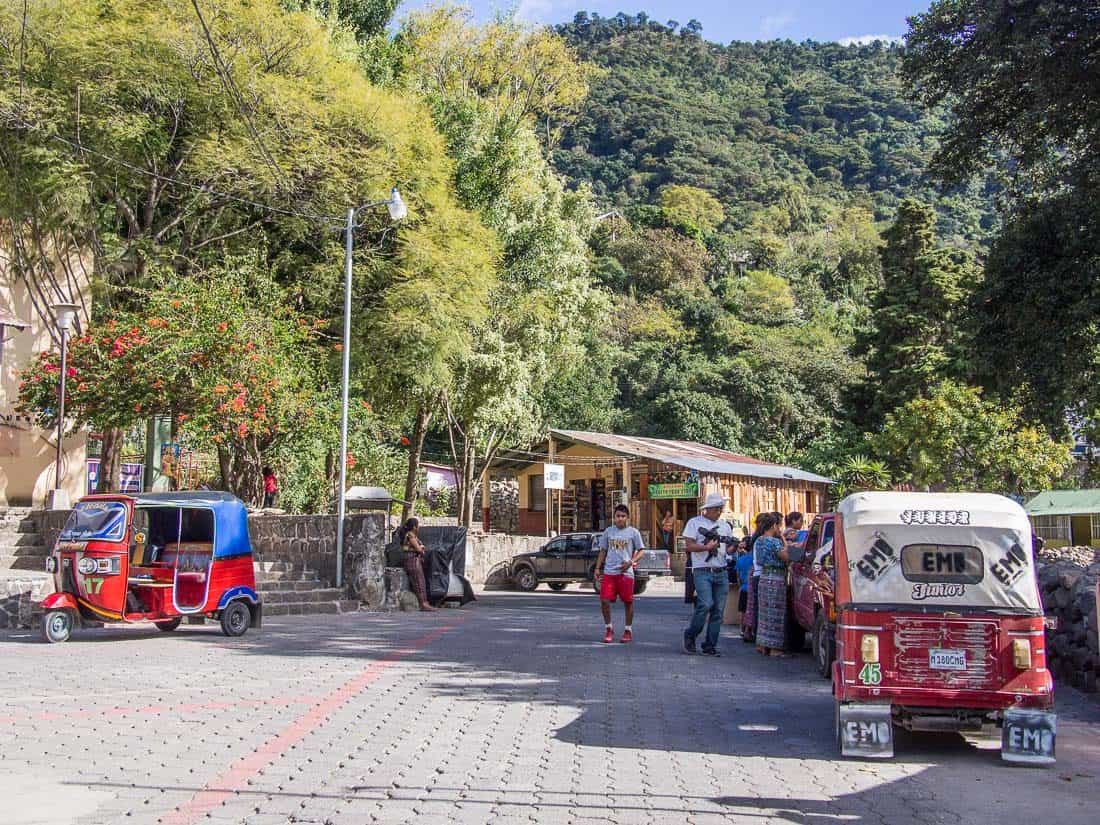
From the main road a pedestrian track leads towards the dock through a jungly maze of gringo restaurants and guest houses; local women sat on the floor selling banana bread and bracelets. Narrow dirt paths veer off through the avocado and banana trees, and at first we felt like we were intruding in someone’s backyard.
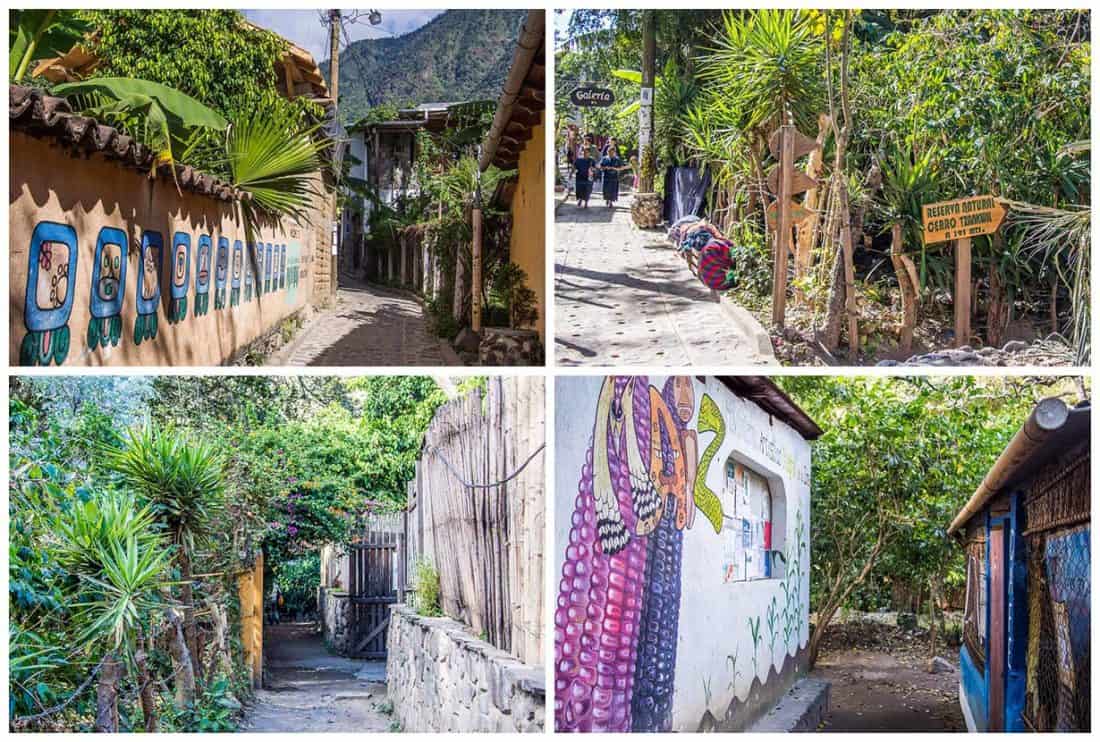
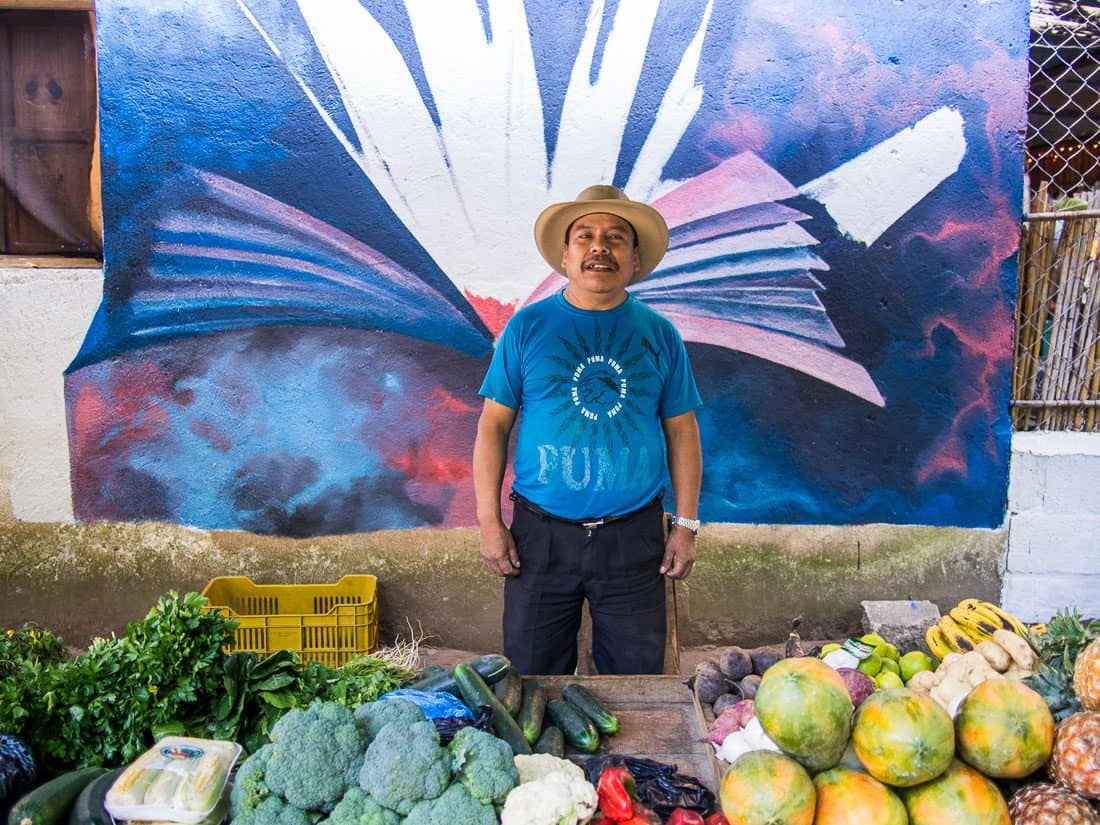
San Marcos is known as the spiritual village and signs on noticeboards advertise events like the Spiritual Sexual Shamanic Experience, Conscious Cacao Ecstatic Dance, Astrological Acupuncture, Lucid Dreaming Retreat, and Men’s Sacred Circle, along with the more pedestrian yoga, Reiki, and crystal healing.
The Mayan community live up the hill from the plaza, in part of the village that’s hidden at first glance by the vegetation and steep incline. Their first language isn’t Spanish but Kaqchikel, one of three indigenous languages spoken at Lake Atitlán. The women wear traditional dress—colourful patterned blouses, long woven skirts, and a wide belt where they tuck away their mobile phones.
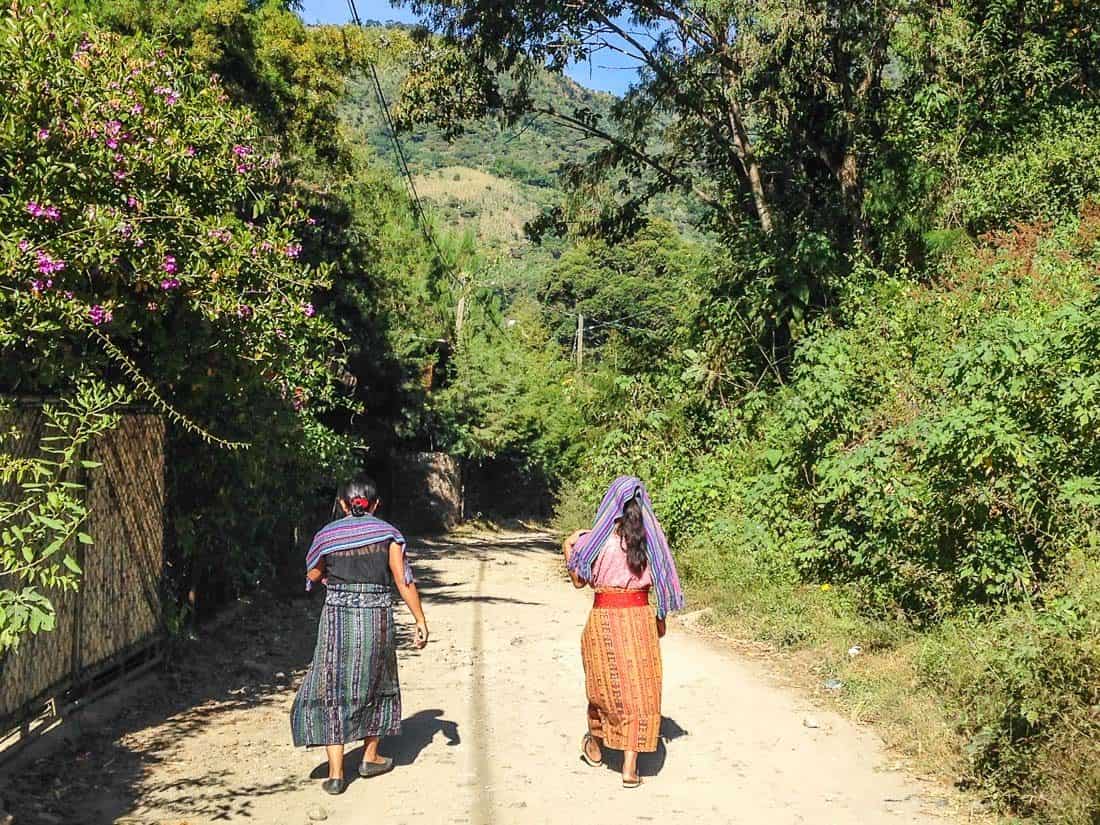
The locals are friendly and helpful, but there’s a slight reserve, a sense of separateness: they don’t eat in the same restaurants as we do, speak a language we don’t understand, live a life that seems so different from ours.
And, in all honesty, breaking through the cultural barrier isn’t something we’re here to do. After months of travel staying with friends and family, we’re in hibernation mode, happy to retreat into ourselves, rest, and work towards our goals.
We couldn’t have asked for a more beautiful place for it.
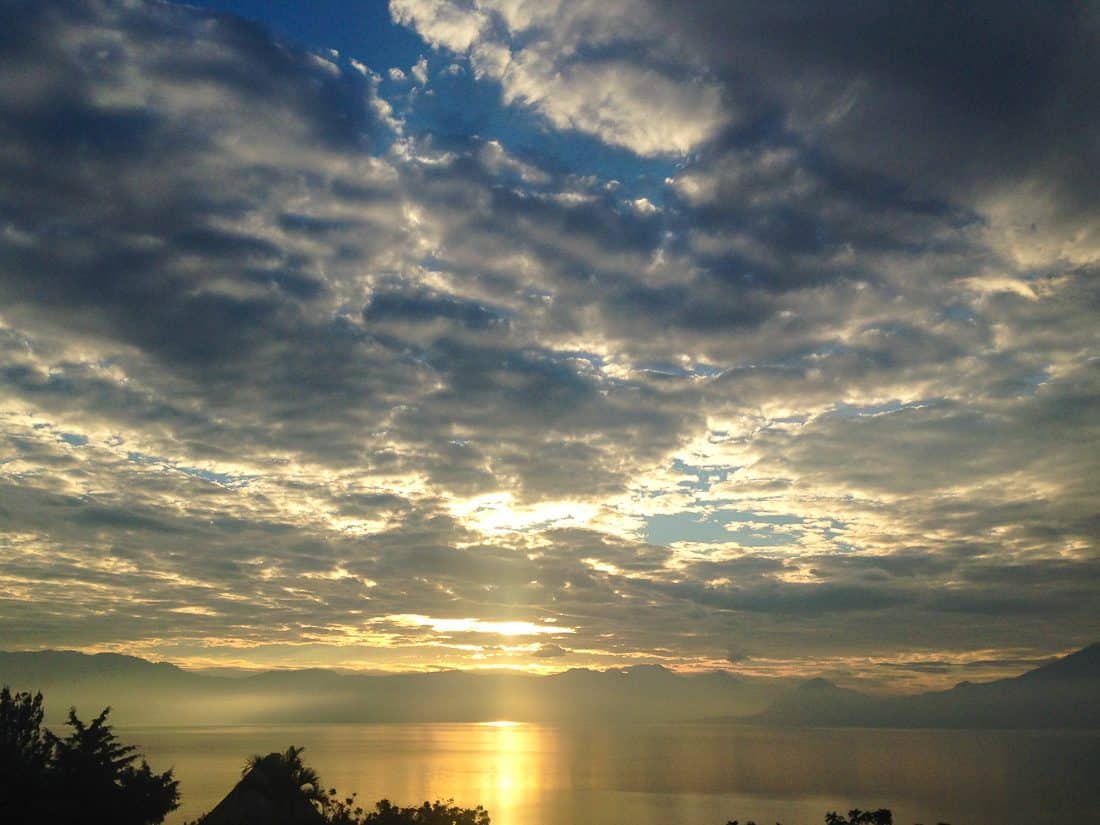
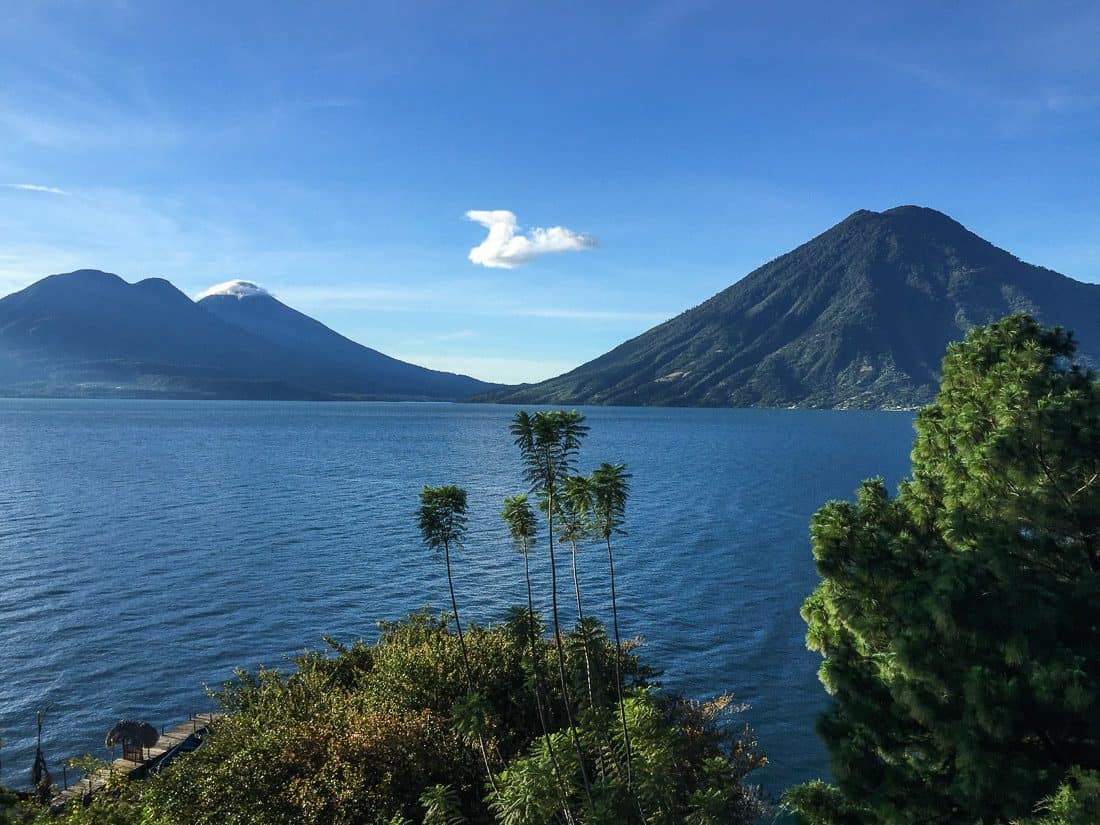
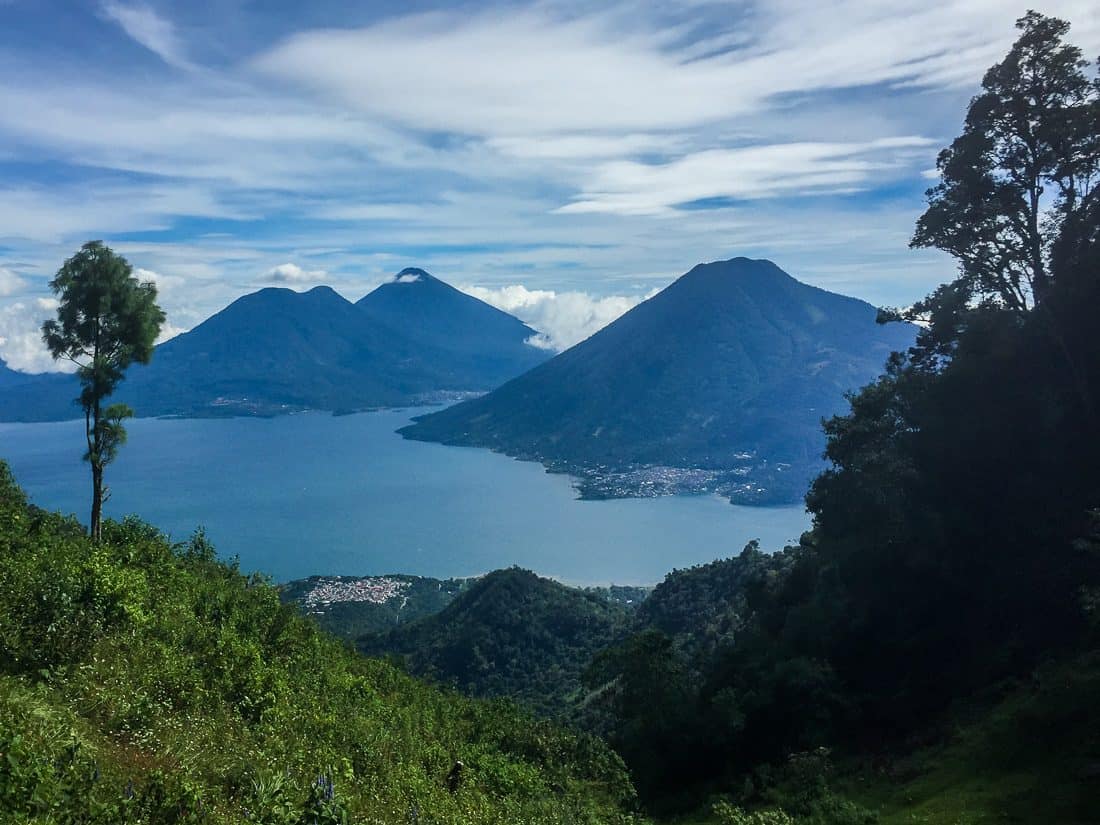
We rented an apartment at Pasajcap which is both the name of the apartment complex and the area between the villages of San Marcos and Tzununa. It’s a beautiful, tranquil place with well-equipped, spacious studio apartments and cottages. The views are stunning, and it’s well run by owner Pierre and his team. We paid $700 a month in the high season; cottages are cheaper. We’ve been here for six weeks, and as our apartment is booked up, are moving to a new house for our final month.
I’ve also written about the costs and practicalities of living in San Marcos.
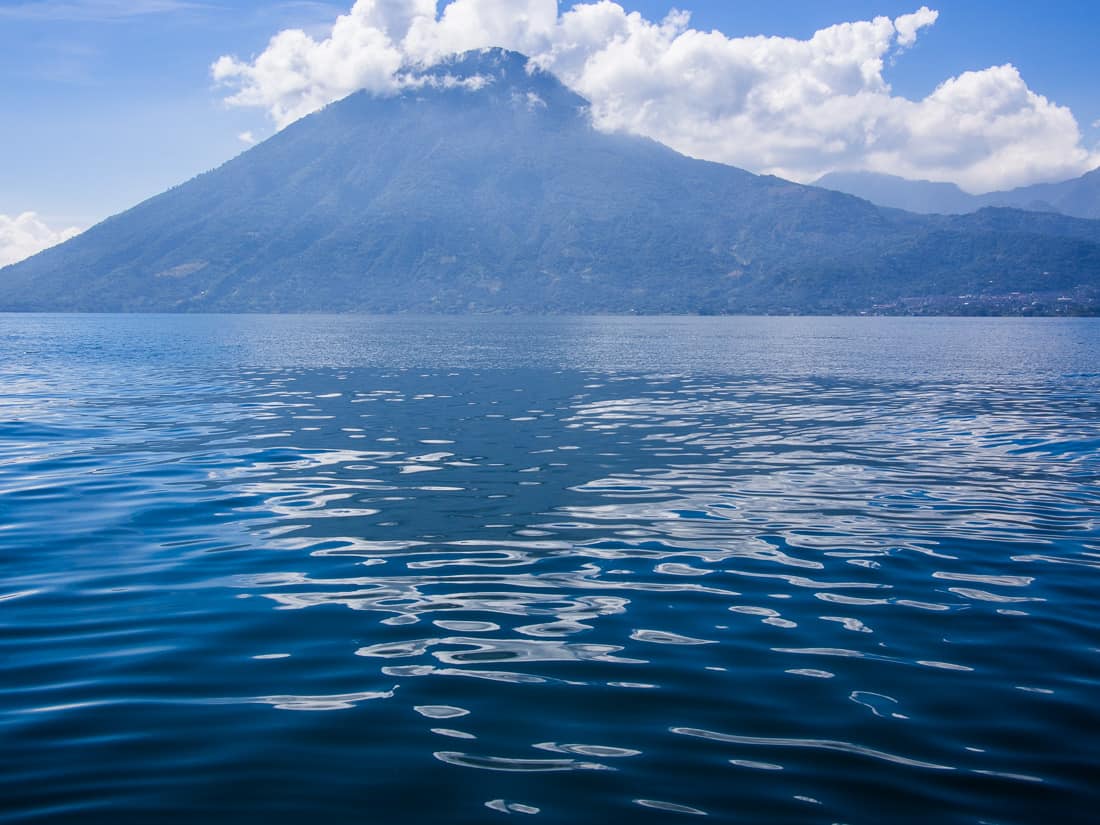
Hi, I loved your article, and your photos. Do you have the contact information for the apartment. We are headed their soon.
The link is at the bottom of the article. Enjoy!
Thanks so much for the information and your quick response. Very much appreciated!
Lyn
Is it a busy road …safe to walk or just rough ? How much are tuktuks .
Thx
No, there is hardly any traffic, just an occasional tuktuk which cost 10Q ($1.30). You just need decent shoes as it’s a rocky path.
Great blog! Thank you for all the wonderful information. My husband and I are thinking of travelling for 2 months to Guatemala next Jan- Feb 2017. We were hoping to stay in Pasajcap for about one month and also take Spanish lessons there. Is walking doable to the Spanish school in San Marcus from there each day or is there a closer/ better option (other than staying elsewhere.). What have you heard about the school? What other places would you recommend visiting for the other month? I have read mixed safety opinions . If we took reasonable safety precautions what places would you consider safe to travel to ?
Thanks so much !
There is nothing between Pasajcap and the centre of San Marcos, so the Spanish school there would be nearest. It takes 15-20 minutes on a pretty rough road, but you could always get a tuktuk if you got tired of the walk.
We didn’t travel anywhere else in Guatemala except Antigua, but that’s definitely worth visiting.
Just a quick one. I’m a seasoned traveler and I am planning to visit Guatemala Jan/Feb/March of next year. I have been keying in on San Marcus. My plan is flexible, but for now I want the first month or two at someplace with ambiance to just relax—lay back for a while and enjoy. The last month I’ll bum around where ever the road (and fellow traveler’s tips) take me, which is my usual mode of travel.
I have never booked ahead, and am leery to do so for an extended stay. I like to come into a town and find a place on my own so I can see what I am going to get. I am fascinated by what you found and would be interested in booking the same based on your recommendation.
I also have a concern of finding places which are scattered around the lake with only boat travel to them. My Spanish is rusty but I can get by.
However, my question is: “would I be better booking ahead this time?” San Marcos appears to be a popular destination. Calender’s fill spotty with week long travelers and the difference between being on the water near the water is monumental. For this trip, I am adamant about having a decent view from my habitation (patio or balcony included) . I have found this is the paramount difference for an extended stay between having a good winter and a great winter and am willing to go the distance for it.
Any information to help me make the decision would be appreciated.
Don
If you’d like to stay at Pasajcap (which we loved) then you’ll need to book in advance as it’s very popular. If not then I’m sure you’ll find somewhere once you arrive. We have some tips on finding a place in this post: http://www.neverendingvoyage.com/guide-living-san-marcos-la-laguna-lake-atitlan/ Good luck!
Nice, thorough post. You’ve really captured the essence of the place. We have now stayed at Pasaj-Cap five times and fully intend to keep coming back. The place just gets in your blood. But we do find ourselves doing less and less every time we visit – apparently reading, writing, relaxing and going for the occasional swim or walk is enough to keep us occupied (along with the views, of course).
We are in Bali now (which has also been amazing so far) and have started using your Trail Wallet app. Works really well, except for Laynni asking me what we spent on everything all the time. Sometimes a little obliviousness can go a long way when it comes to spending money. But a very handy tool, nonetheless.
Anyway, hope the travels are going well, maybe we’ll cross paths again sometime down the road.
Thank you Dean and it’s lovely to hear from you. I wouldn’t be surprised if we ended up back at Pasajcap at some point.
And thanks for giving Trail Wallet a try! Enjoy Bali!
Guatemala is the one destination on the rough itinerary for my upcoming RTW trip that I am still a bit wary about. I know that I absolutely have to visit, it’s been at the top of my list for a while as it seems the perfect combination of awesome history and beautiful natural landscape which is perfect for me. But still a little bit worried about safety as a solo female traveller.
I think you’ll be fine, especially on the usual tourist route and if you take shuttle buses. We didn’t feel unsafe at all and there were plenty of solo female travellers around.
The perfect place to unwind! Gorgeous photo’s… couldn’t ask for a better view. Definitely adding to my (ever growing) list.
Welcome to the Lake. We live just across the lake from San Marcos in Panajachel. My wife teaches school and my kids attend school here. If you are still in the area and interested in a meetup, please let me know. Love the blog!
Lake Atitlan is incredible
Be sure to go for the sunrise hike up Indian’s Nose. Watching the sunrise over the lake is magical
Hard to capture in photos, but we did our best: http://www.gocurrycracker.com/sunrise-summit-of-indians-nose/
I spent Christmas at Lake Atitlan in San Pedro 2 years ago. We also visited San Marcos and San Juan during our stay. I miss that peaceful lake and its villages and hope to return one day. Your post takes me right back there, thanks :)
How gorgeous. I could certainly get some writing done in that place! Although, during the four cold, gray months of winter in Munich, Germany, I also get a lot of writing done huddled under a blanket on the couch :D Wish you all the best! Happy travels :)
Hello, so glad I surfed into your site. I love what you have done here. I admire your ability to travel light, it would be a challenge for me. I see why it is a good idea to do that from an airport perspective, though.
My daughter, Katie Lee, is in San Marcos La Laguna, too. She has done some baking for Restaurant Fe, if you are familiar with it. The pictures above have given me a good perspective on the little town.
Hope you have fun for the next month while you are there. I look forward to reading more of your travels. Your site has great information for the traveler on a budget.
We are actually just sitting in Restaurant Fe now and I was just admiring the baked goods!
Oh wow. I visited Guatemala last year and loved it. It’s definitely on my list for a longer stay. It looks beautiful :)
Looks like heaven! I was just telling Zab earlier today that we have to stay there at some point. I’m really interested to see your post soon about the overall costs and practicalities of San Marcos.
I have lots more info to share. At the moment Trail Wallet is telling us we’re averaging £29 a day!
This place is so gorgeous, with all the green…everywhere!
It’s almost depressing me that I’m not there :D
Have fun!
It is a wonderfully colourful place. We arrived just after the rainy season so everything was lush and green. It’s beginning to dry out a little now but still lovely.
Wow! Lake Atitlan looks like something out of a dream! Even with the slightly dodgy internet at times, it’s not hard to see how you’d find the area both inspiring and restorative. We’re looking to take our first trip to Latin America in 2015 starting with Mexico, but I suspect a trip to Guatemala is not far into our future. Whenever we do visit, we’ll have to make sure we spend some time here!
It’s definitely worth putting up with the internet. Hope you guys make it here!
Oh, be still my heart! Looks absolutely stunning. I’ve been reading the blog for a while, love your photographs and so inspired by how you’re living and working. Thanks for sharing :-)
Thanks Mhairi. It is a very special place.
This is the first post I have read from your blog and I very much like your style, easy to read, picturesque and informative and the photos are truly beautiful. For those of us who are not there it makes you feel like you are. Fantastic.
Thanks very much Chris.
So amazing! I love Lago Atitlan… our stay at Casa del Mundo is still a favorite from 10 years of travel. Thanks for sharing.
So glad you loved Lake Atitlán! It’s a truly magnificent place, and your photos & text only embellished it further. Good luck!
Thanks for your advice about it and the inspiration from your posts.
Oh my goodness gracious, this place is so gorgeous – I want to go! In fact, maybe I will. I’m heading to Guatemala some time in 2015 and would definitely like to rent somewhere for a month or so :)
Do it! Lake Atitlan is one of those places where many people stay far longer than they planned. Renting an apartment here would be a great option.
Hi! I’ve been loving your blog, and use Trail Wallet as well. We are headed off on slow travel in February 2015 going to Ecuador and Colombia for 15 weeks. Then in June we fly to Lisbon and we’ll see how long we can travel around Europe before heading to Asia. I know we will want to return to central and Sluth America.
Do you make accommodation reservations prior to arriving in your destination or wait to see what’s available once you’re on the ground?
You asked about packing. I love carryon only but haven’t ever done slow travel. It feels like we have to carry more stuff. Since it isn’t just a 3 week holiday we will need to carry soap, towels, larger bottles of stuff, won’t we?
Thanks and happy new year!
We are leaving Canada in Jan for Peru. Returning home from Ecuador the end of March. Backpacking as usual. Interested in your plans.
Jed
It’s a mix. We usually book somewhere for at least the first few nights. For longer term apartments we get better deals if we just turn up and look locally. We booked Pasajcap in advance though as we had many recommendations and it gets booked up. We always book in advance in Europe as it’s more expensive.
You can read more about how we find apartments around the world in this series: http://www.neverendingvoyage.com/find-apartments-around-world-part-3/
We don’t pack towels (our apartments always provide them) and we buy toiletries when we get there. There’s no need to take more than you would for a shorter trip. Good luck and enjoy!
As always, enjoyed your post immensely. Beautiful and interesting places, wonderful pictures, informative comments. Thank you.
Any plans for an Android version of Trail Wallet? Would have been useful on our recent trip through Hungary, Croatia, Serbia, Bulgaria, and Romania.
Caroline and Paul
Thank you! That sounds like a wonderful trip! Unfortunately we don’t have any Android plans. We just don’t have the time or resources to develop for it as it’s a completely different platform.
Great pics guys- been reading the blog for a long time now and have picked up some great ideas and you’ve confirmed some of my own ideas about travel (slower the better!) This summer I used trail wallet quite a bit in SE Asia so looking forward to update
Me and my girlfriend are looking to go to Mexico next Summer and renting a place for a month (maybe in Yucatán as Cancun airport is easiest from Ireland). I get bored if I can’t get a run or swim in everyday. Me and my girlfriend both love running and swimming so somewhere like Lake Atitlan would fit the bill (except for the running maybe). I spent 2 weeks there about 7 or 8 years ago and loved it.
Guanajuato also looks great as well…Gorging on comida mexicana at the end of the day also really appeals
Erin – do you have any suggestions for Mexico that would have suitable road/ trails for running? Obviously want to avoid pollution, traffic, heat.
San Cristobal seems a great option of reading this /
Anyway love the blog…suerte, Brian
In Mexico I loved running on the beaches. In Playa del Carmen the beach goes on for miles. In San Pancho on the Pacific coast the beach was smaller but still a good place to run, plus there was a road that went through the jungle. I didn’t run in Guanajuato but we hiked in the hills that surround the city. We are going to San Cristobal in January—I’ll let you know how it goes. The hill towns would be cooler but I found the beaches manageable at sunrise.
Beautiful photos! My husband and I were in Guatemala in 2008 and Lake Atitlan was definitely a highlight. If you can tear yourself away from the amazing surroundings of your apartment, do check out St. Simon (aka Maximon) shrine in Santiago Atitlan. It stands out as one of the most unusual and memorable experiences in our travels.
Kathy
P.S. We’re off to Guanajuato over the Christmas holidays–your post and pictures had a lot to do with it!
Thanks for the tip Kathleen. I’m hoping in January after Simon has finished the update to our Trail Wallet app that we might be able to explore a bit.
Have a wonderful time in Guanajuato —such a beautiful place!
Wow. Incredible environment. Love these pictures.